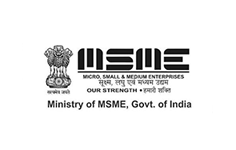I used to think copywriting was all about being clever. You know, coming up with those catchy one-liners that make people stop and go, Wow, that’s brilliant!
But here’s the thing. I spent so much time trying to be creative that I forgot the most important part of writing: understanding people.
I’d sit there, staring at my screen, trying to pull words out of thin air. And guess what? They weren’t converting. The emails weren’t getting clicks. The ads weren’t making sales. My landing pages? Ghost towns.
Then one day, I stumbled onto something that changed everything. I stopped guessing.
Instead of trying to magically come up with the “perfect” words, I started with something much simpler: real data.
Step 1: Learning to Listen
Instead of staring at a blank screen, waiting for inspiration, I turned into a digital detective.
First, I ran a survey. A basic Google Form. No complicated jargon, no 20-minute commitment—just five easy questions. The kind people answer while scrolling through their phones, half-distracted but still honest.
Then, I dove into Instagram Stories – the ones where people hold their phone way too close to their face, sigh dramatically, and say, “Okay, so here’s the deal…”
That’s where the truth lives.
People spill their unfiltered thoughts in Stories, comments, and tweets. They don’t hold back. What frustrates them? What excites them? What makes them rant to their best friend on WhatsApp? That’s the gold.
Next stop: competitor reviews.
Amazon, Reddit, and even those chaotic Facebook comment sections. If you want raw, unfiltered honesty, the 1-star reviews are where it’s at. People write entire emotional essays just to explain why they’re mad.
And in those rants? Clues. Complaints. Patterns.
Because what people hate tells you exactly what they want.
Suddenly, the blank page wasn’t scary anymore.
I wasn’t sitting there, forcing words to sound “catchy.” I was listening. Picking up real emotions, real frustrations, and turning them into words that actually connect.
And that? That’s the secret. Not cleverness. Not fancy words. Just listening better than anyone else.
And once I had all the data, I had to figure out how to use it.
Step 2: Organising the Chaos with Psychology
I’ll be honest. Once I started gathering all this data, my brain was overloaded. It was like I had a hundred different puzzle pieces, and I had no idea how they fit together.
That’s when I stopped looking at words and started looking at people.
Instead of just writing, I began asking: What emotions are driving these responses? What’s the deeper fear behind their problem? Why do they really want a solution?
Because most of the time, people aren’t just looking for a product or service. They’re looking for relief. For confidence. For a way to fix something that’s been bothering them for ages.
It’s rarely about what they say on the surface. It’s about what they feel underneath. Someone searching for productivity hacks isn’t just looking to “be more efficient.” They’re tired of feeling guilty for not getting enough done.

Once I started writing with that in mind, everything changed. The copy wasn’t just words—it was understanding. And when people feel understood, they don’t just read. They respond.
That shift alone made my writing so much more powerful. And once I had my message clear, it was time for the fun part—actually writing.
Step 3: Writing Copy That Sticks
Here’s where I stopped writing like a marketer and started writing like a human.
The first thing I leaned into was something called The Power of Three. It’s a little trick that makes writing feel natural, rhythmic, and complete.The other trick I started using was repetition. Not just repeating words randomly, but emphasising a single key idea over and over again.
And finally, my absolute favourite technique: The List & Twist.
I LOVE this one.
Basically, you write a simple list, two normal things, and then hit the reader with something unexpected at the end.
Final Thoughts: What I Learned
If there’s one thing I’ve learned about writing high-converting copy, it’s this: It’s not about being clever. It’s about being clear.
The best copy comes from understanding your audience deeply, structuring your message in a way that makes psychological sense, and using simple techniques to make it engaging.
And most importantly—it has to feel human.











